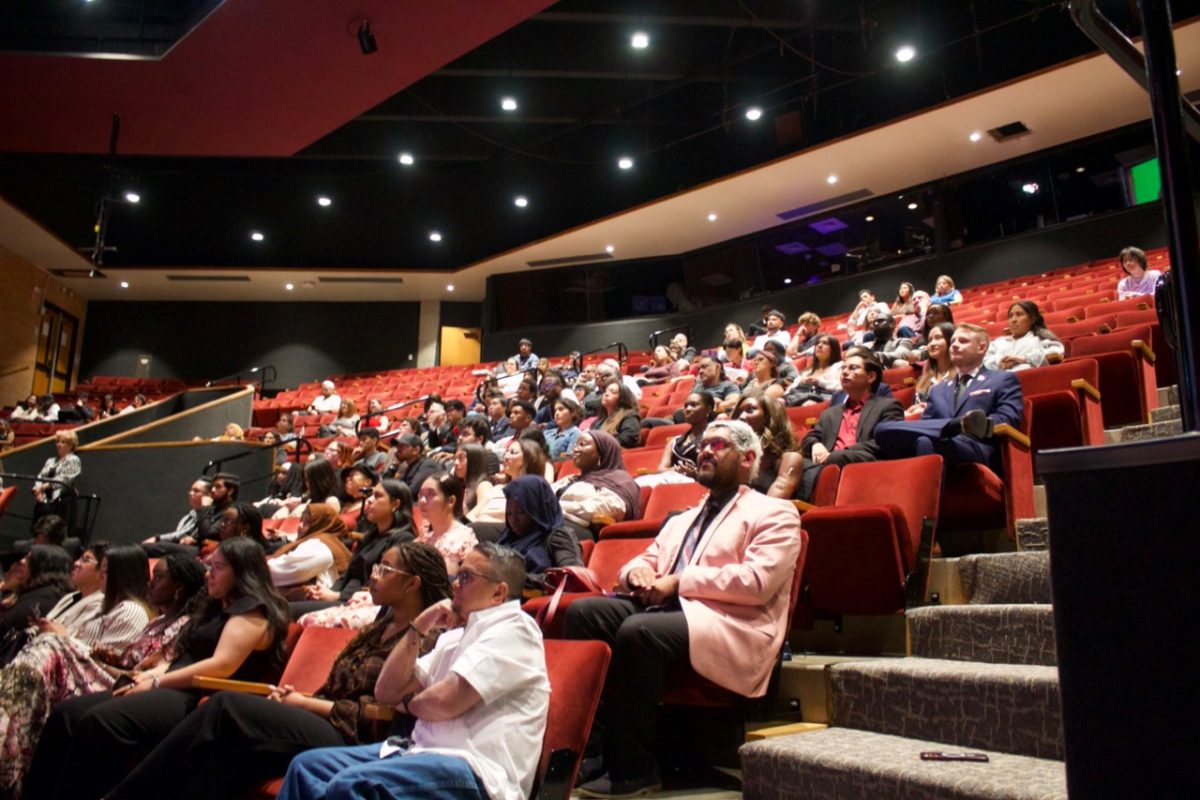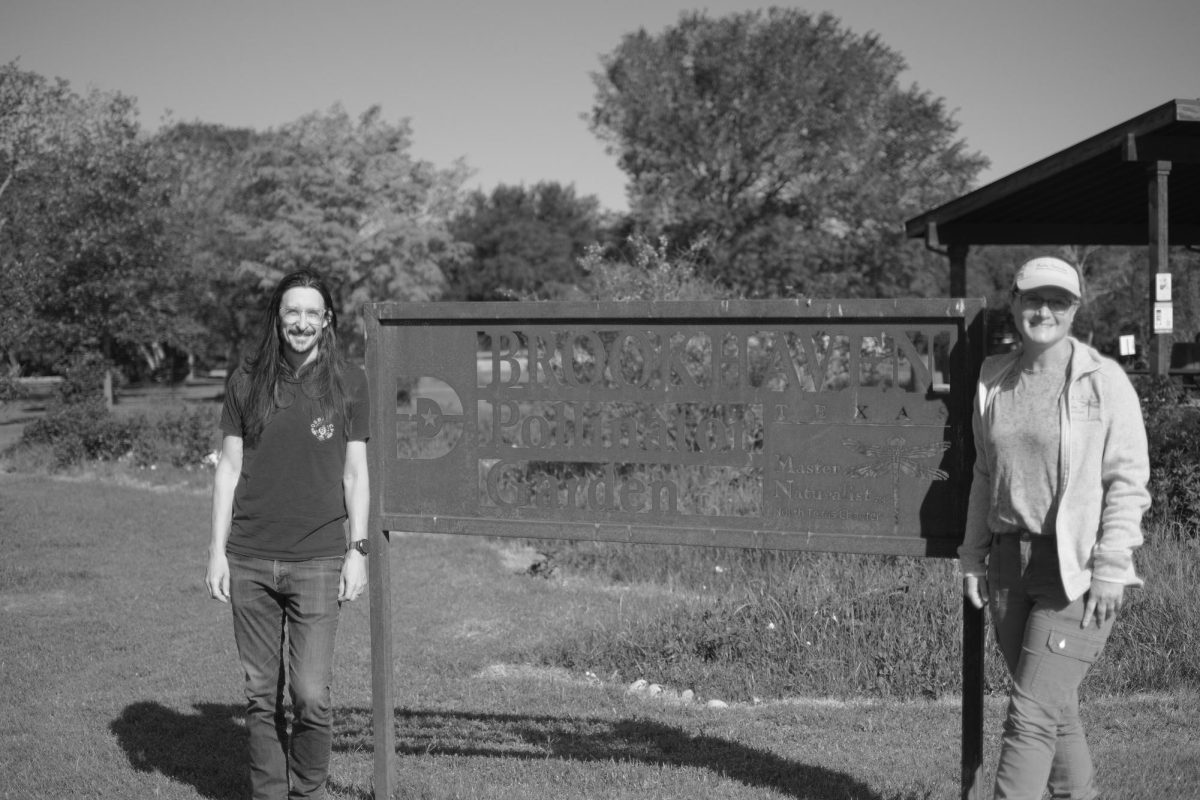The Gurdwara Singh Sabha Temple allows the community to engage in the nuances and hospitality of the Sikh religion.
By Elena Walker
Contributing Writer
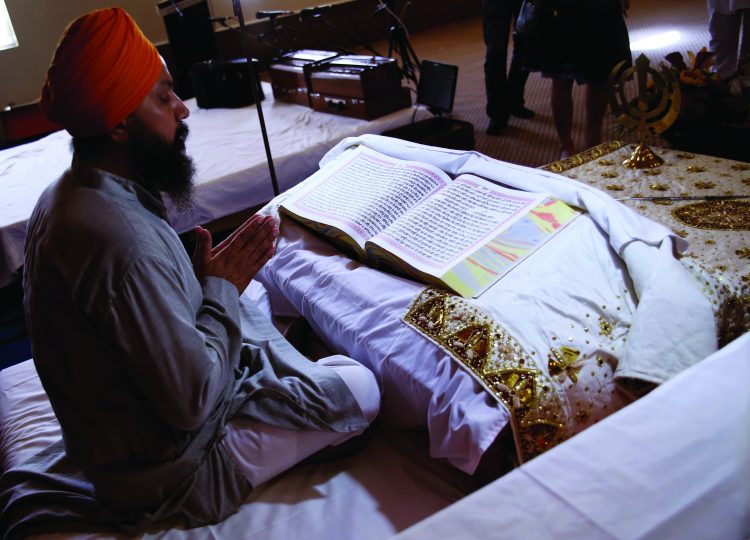
Apardeep Singh, a Sikh leader of the the Gurdwara Singh Sabha Temple in Richardson, Texas, prays over the Sikh holy book, Guru Granth Sahib.
Brookhaven College students entered the main worship room of the Gurdwara Singh Sabha Temple in Richardson, Texas, with wrapped heads, bare feet and pens, ready to take notes.
Students visited the temple as part of an introduction to world religion class taught by Scott Bridger, world religion adjunct faculty. They were greeted by Apardeep Singh, a Sikh leader of the temple.
The class sat in a circle on the floor while Punjabi worship music echoed throughout the temple. Singh began his lesson by asking the students if they were religious. “Every religion is good,” Singh said. “Sikhs respect every religion.” He then discussed the history of Sikhism, which began in 1469, and mentioned the 10 main gurus of Sikhism throughout history.
Singh escorted the class to the kitchen. Light gleamed from the windows and shined across the clean granite floors. Some students were confused because they noticed there were no tables or chairs for dining. Instead, rugs lay parallel for students to sit on. “It was really nice to feel invited to eat with them in their temple,” Cali Hood, a student, said. “We sat on the floor on rugs and ate as a group.”
In the Sikh religion, Langar refers to a community kitchen where a free meal is served to all visitors without distinction of religion, caste, gender, economic status or ethnicity.
Singh’s colleagues prepared steamed white rice, chickpea soup, a milk-based fruit soup and Punjabi tea for the students.
Singh shared the three fundamental principles of his religion – Nam Japna, Kirt Karna and Vand Chakna.
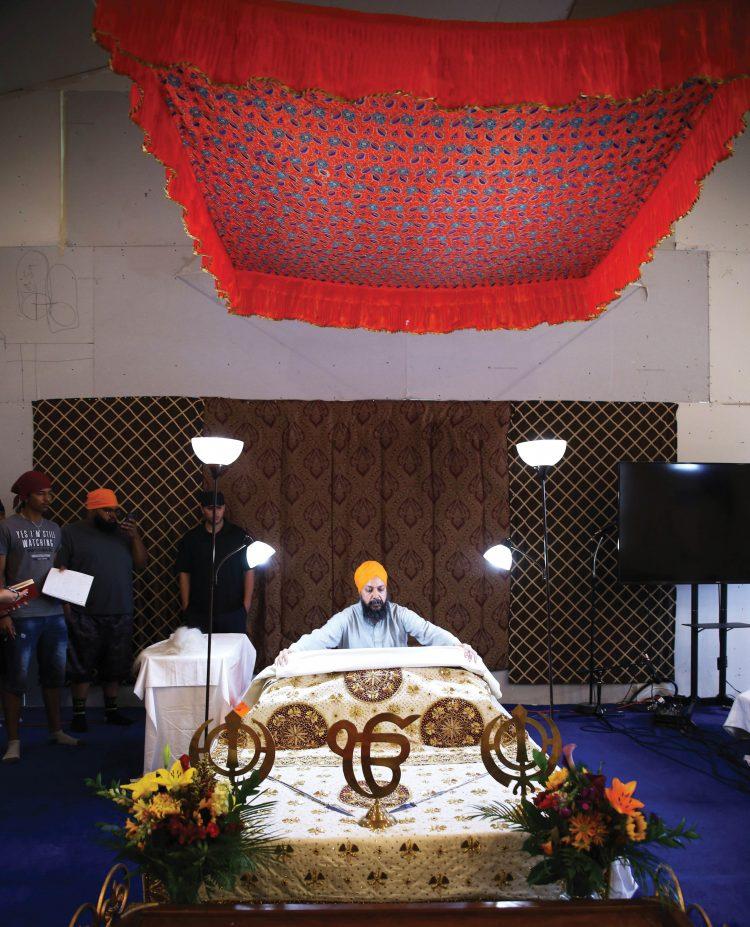
Nam Japna refers to meditation on God’s name, according to sikhs.org.
Kirt Karna means to do honest work. “If you want to serve people, be a good human, take care of [your] family, children, elders and community,” Singh said.
Vand Chakna refers to giving to charity. Singh said 10 percent of income is donated to help everyone in the community.
Bridger said he allows his students to share their religious backgrounds in class. “Some people know what they believe and others don’t,” Bridger said.
“I have a Christian background, so for me, it’s been very interesting because I can get to know more about other religions,” Ariel Carvalho, a student, said.
Bridger said the class goes beyond textbook assignments, and he recommended students take the course. He said the class field trips to the various temples help students learn more about the world around them.
After their meal, Singh gave the class a tour of the rest of the temple, referred to as Gurdwara. After the tour, Singh prepared a short worship ceremony. He read from the Sikh holy book, Guru Granth Sahib, and finished with a perfomance of religious songs.
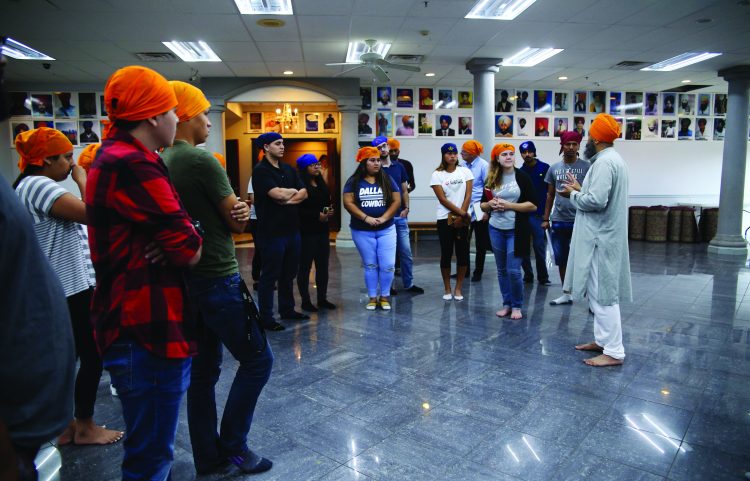
Bridger said students who have never ventured into the space of another religion have opportunities to break barriers and clear misunderstandings through visits such as these.
Bridger also said learning outside the classroom allows students to explore the nuances of world religions by visiting various places of worship. “To enter in their space and share a dialogue with them, it creates a lot of awareness and just opens peoples’ eyes,” he said.
The Sikh temple was one of five trips Bridger planned for the class during the semester. Bridger said the class has visited Buddhist and Hindu temples and will soon visit a synagogue, a Coptic church and a mosque.



